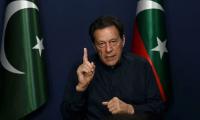The dawn of the new century provided an exceptional opportunity to fix the tax system. The military government did not face the lingering political uncertainty that characterised the tenures of elected governments between 1988 and 1999.
The government embarked on an ambitious agenda of tax reforms to generate necessary resources for development. Interestingly, the reforms were a mix of home-grown thinking as well as an IMF programme. The government initially faced serious scepticism in light of the litany of unfinished programmes and the dubious distinction that Pakistan had earned as a ‘single tranche’ country.
Yet, after the successful implementation of the 10-month stand-by programme (SBA) between November 2000 and September 2001, the country was enthusiastically offered a three-year poverty reduction growth facility (PRGF), which saw a host of tax reforms.
The home-grown reforms were done in two parts. First, an extensive exercise in documentation was undertaken with the help of the armed forces to broaden the base of taxation. However, it ran into difficulties when it came to the documentation of small traders as their protests pushed the exercise back. The effort also included a broad-based amnesty scheme, which elicited the declaration of some Rs120 billion in assets, all domestically-held. A tax of 10 percent was paid that generated tax revenue worth Rs12 billion.
Finally, there was also a component to cleanse the tax machinery from officers who did not carry clean reputation. This was done with considerable fanfare, where the chief executive announced action against such officers. Like many such attempts in the past, it turned out to be ineffective as a majority of officers got themselves cleared after going through the due process of law.
Second, a taskforce was established, headed by former vice-president of World Bank, Syed Shahid Hussain, to study and recommend changes in tax administration. It was for the first time that tax administration was the focus of reforms as previous efforts dealt mostly with the tax policy. The report of the taskforce became the basis of numerous changes in tax administration – most notably in the promulgation of a new Income Tax Ordinance, 2002 and the functional organisation of FBR, with the appointment of new members for HR, IT, law and taxpayers’ education and facilitation.
The widespread use of ‘self-assessment’ in the payment of taxes; reduced interaction between the taxpayer and collector; additional remuneration for tax officers; and on-the-job training programmes were some of the recommendations implemented by the government.
The Fund programme, on the other hand, was more concerned with enhancing the tax-to-GDP ratio as the fiscal deficit continued to pose a threat to macroeconomic stability. It, therefore, envisaged expansion in the base of the general sales tax (GST) by removing exemptions on important items such as edible oil; vegetable ghee; electricity; and restoring a single rate to preserve the integrity and purity of GST.
On the income-tax side, the broadening of the base and the simplification of taxation on the basis of the recently-promulgated Income Tax Ordinance were the main reforms. The specific measures included: (a) the elimination of at least 55 exemptions (about one-third of the total); (b) the lowering of the threshold on the National Savings Schemes (NSS) instruments subject to withholding taxes on interest income; (c) further steps towards unifying the corporate tax rates (and eventually bringing them to 35 percent); and (d) the elimination of some withholding taxes. The wealth tax was abolished.
On the customs side, the reforms included further reductions in the maximum tariff (to 25 percent), cutting the number of exemptions provided through Statutory Regulatory Orders (SROs) from 13 to six by June 2003 and eliminating the remaining nonstandard exemptions by June 2004.
The excise duty was either to be phased out or kept only for a few items, such as cigarettes. In the area of petroleum taxation, the aim was to reduce the bias in favour of diesel consumption by raising the levy on diesel fuel to bring it in line with that of gasoline, which is also environmentally beneficial.
The Fund programme also benchmarked the implementation of the taskforce report by requiring tax policy measures to accompany a major reform in tax administration.
On the basis of a medium-term strategy and action plan, prepared as a prior action for the programme, the reform focused on the reorganisation of FBR; the establishment of a large taxpayers unit; the use of self-assessment; human resource management; enhancing the use of IT; and improving accommodation for tax offices.
Structural benchmarks in the first year of the programme included the completion of the new organisational setup for the FBR headquarters by the end of February 2002 and the establishment of a large taxpayer unit by the end of June 2002.
The above reforms were, indeed, the need of the hour and received a great deal of support in the beginning. However, there was a significant amount of resentment from businesses when GST expansion was implemented and measures to bring in agricultural income tax and the real-estate sector yielded no fruitful results.
The Fund programme met with unprecedented success. All reviews were completed (except the last two, which were not carried out) as major targets – particularly the reduction in budget deficit – were met. However, and surprisingly, the major disappointment of the programme was its failure to increase the tax-to-GDP ratio.
The reduced deficit was, therefore, owed to the increased receipt of non-tax revenues (defence receipts in the form of the Coalition Support Fund) and reduced expenditures. In fact, the tax-to-GDP ratio declined from 11 percent in 1998-1999 to 10 percent in 2004-2005 – the last year of the programme.
This was a puzzling outcome, given such extraordinary efforts to reform the tax system. One view was that the reforms were not fully completed until then and revenue implications would take time. Another view pointed out that the indiscriminate application of self-assessment, with the implicit understanding of no audit, and a large number of withholding (WH) taxes, without the monitoring of WH agents, provided a built-in incentive for tax evasion and a consequent drop in revenues.
To be continued
The writer is a former finance secretary. Email: waqarmkn@gmail.com
Punjab, with its population of over 120 million, stands at a critical juncture in its history
Events leading up to the upcoming protests and beyond are a powerful reminder of Pakistan’s once relatively...
Efforts are alas now being made to fragment the HEC and hand over the pieces to the provinces
Pakistan’s total electricity consumption, as measured in terms of sales, has decreased to 112.9 TWh in FY2023 from...
Any progressive society or government will uphold security so that people can utilize their full potential
In Pakistan, we have witnessed erosion of public trust in government institutions







